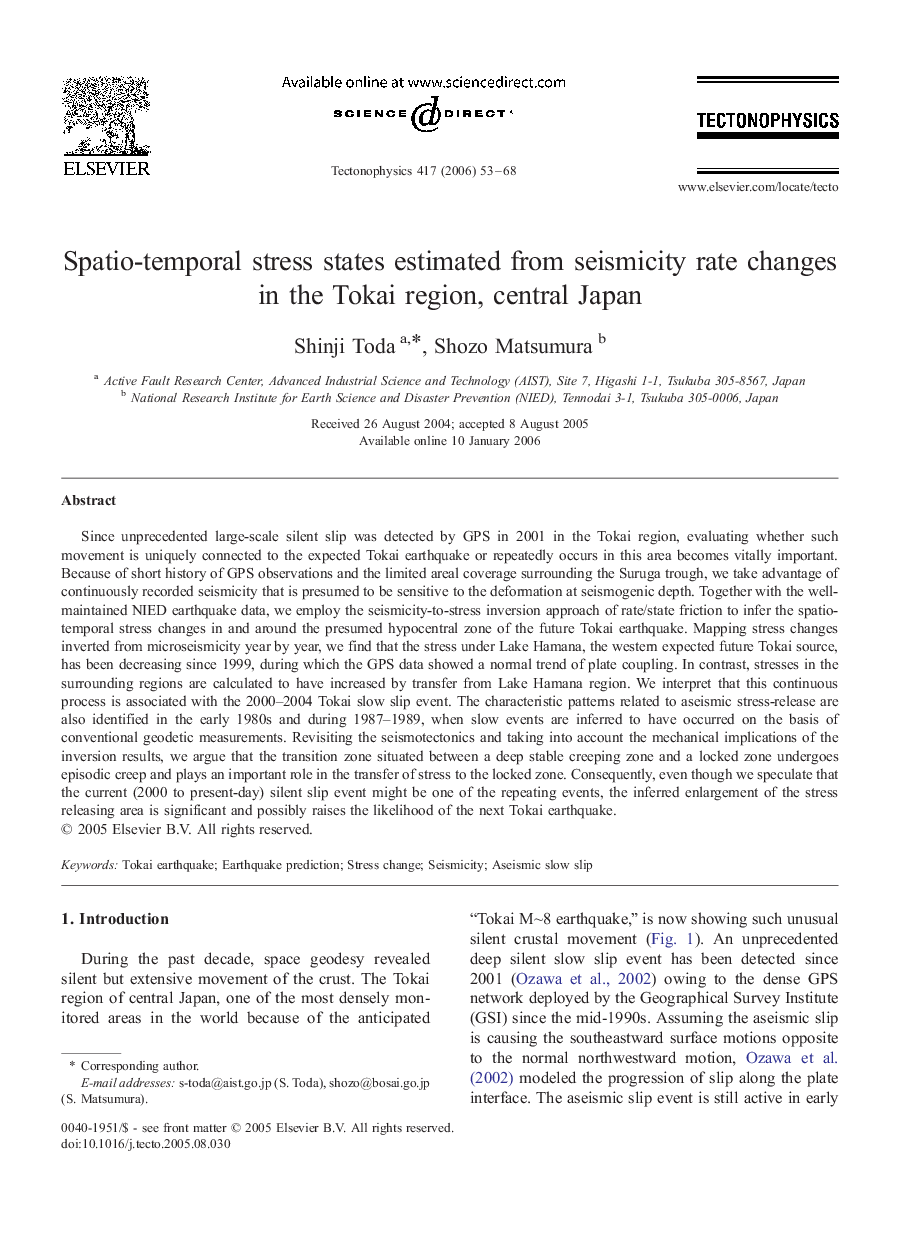| کد مقاله | کد نشریه | سال انتشار | مقاله انگلیسی | نسخه تمام متن |
|---|---|---|---|---|
| 4695264 | 1636959 | 2006 | 16 صفحه PDF | دانلود رایگان |

Since unprecedented large-scale silent slip was detected by GPS in 2001 in the Tokai region, evaluating whether such movement is uniquely connected to the expected Tokai earthquake or repeatedly occurs in this area becomes vitally important. Because of short history of GPS observations and the limited areal coverage surrounding the Suruga trough, we take advantage of continuously recorded seismicity that is presumed to be sensitive to the deformation at seismogenic depth. Together with the well-maintained NIED earthquake data, we employ the seismicity-to-stress inversion approach of rate/state friction to infer the spatio-temporal stress changes in and around the presumed hypocentral zone of the future Tokai earthquake. Mapping stress changes inverted from microseismicity year by year, we find that the stress under Lake Hamana, the western expected future Tokai source, has been decreasing since 1999, during which the GPS data showed a normal trend of plate coupling. In contrast, stresses in the surrounding regions are calculated to have increased by transfer from Lake Hamana region. We interpret that this continuous process is associated with the 2000–2004 Tokai slow slip event. The characteristic patterns related to aseismic stress-release are also identified in the early 1980s and during 1987–1989, when slow events are inferred to have occurred on the basis of conventional geodetic measurements. Revisiting the seismotectonics and taking into account the mechanical implications of the inversion results, we argue that the transition zone situated between a deep stable creeping zone and a locked zone undergoes episodic creep and plays an important role in the transfer of stress to the locked zone. Consequently, even though we speculate that the current (2000 to present-day) silent slip event might be one of the repeating events, the inferred enlargement of the stress releasing area is significant and possibly raises the likelihood of the next Tokai earthquake.
Journal: Tectonophysics - Volume 417, Issues 1–2, 18 April 2006, Pages 53–68